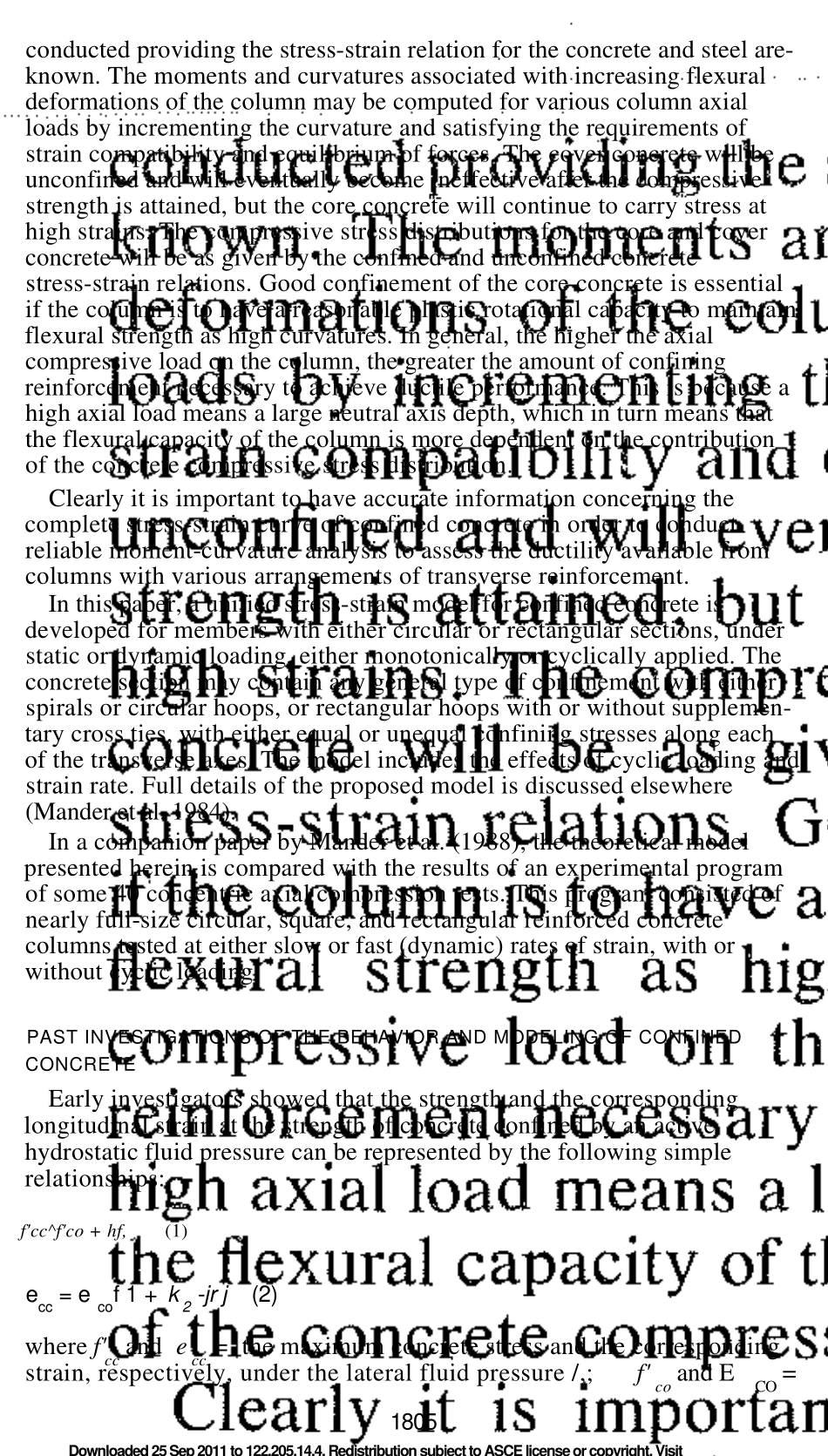THEORETICAL STRESS-STRAIN MODEL FOR CONFINED CONCRETE By J. B. Mander,1 M. J. N. Priestley,2 and R. Park, 3 Fellow, ASCE ABSTRACT: A stress-strain model is developed for concrete subjected to uniaxial compressive loading and confined by transverse reinforcement. The concrete section may contain any general type of confining steel: either spiral or circular hoops; or rectangular hoops with or without supplementary cross ties. These cross ties can have either equal or unequal confining stresses along each of the transverse axes. A single equation is used for the stress-strain equation. The model allows for cyclic loading and includes the effect of strain rate. The influence of various types of confinement is taken into account by defining an effective lateral confining stress, which is dependent on the configura-tion of the transverse and longitudinal reinforcement. An energy balance approach is used to predict the longitudinal compressive strain in the concrete corresponding to first fracture of the transverse reinforcement by equating the strain energy capacity of the transverse reinforcement to the strain energy stored in the concrete as a result of the confinement. INTRODUCTION In the seismic design of reinforced concrete columns of building and bridge substructures, the potential plastic hinge regions need to be carefully detailed for ductility in order to ensure that the shaking from large earthquakes will not cause collapse. Adequate ductility of members of reinforced concrete frames is also necessary to ensure that moment redistribution can occur. The most important design consideration for ductility in plastic hinge regions of reinforced concrete columns is the provision of sufficient transverse reinfor...


